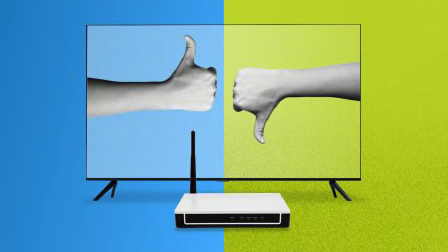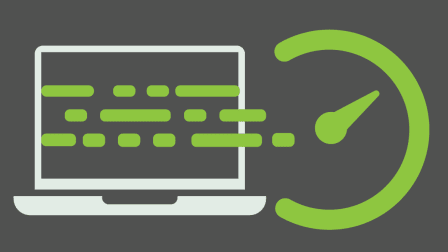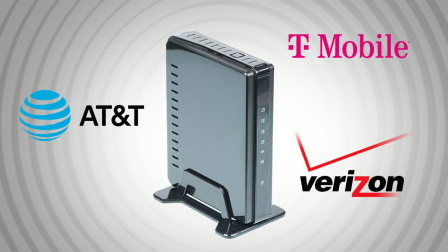Broadband ‘Nutrition Labels’ Will Help You Compare Prices for Internet Service
The FCC is ordering internet service providers to give consumers clearer information on broadband costs and speeds

It’s not always easy to know what you’ll be charged when you sign up for a new internet package, or what speeds you’ll be getting. That should change this week when new rules start requiring providers to prominently display informational labels wherever people shop for internet services, whether that’s online or in locations such as Spectrum and Verizon storefronts.
The labels are similar to the mandated nutrition labels on food packaging, or the window stickers you see at car dealerships. The goal is to give people accurate information for comparing plans.
Why Do We Need Broadband Labels?
When you sign up for internet service, you can’t always be sure what it will cost until the first bill arrives. That’s because of extra fees that aren’t included in the advertised price, even if they show up somewhere in the fine print. It can be particularly tough to figure out how much your internet costs if you get it bundled with cable TV or phone service.
The FCC announced new labeling requirements in 2022, on the same day that Consumer Reports released the findings of a massive study of more than 22,000 internet bills that revealed plenty of confusing fees and a lack of transparency.
For example, several companies didn’t list the price for internet separately when that service was bundled together with cable TV and/or phone service, so consumers didn’t know how much their broadband actually cost.
Add-on fees proved particularly confounding because it was often hard to determine whether they were associated with broadband or with another bundled service. Discounts and promotions were also hard to untangle, so consumers didn’t know when a promotional discount might end, and what the price would be afterward.
What Information Will the Labels Contain?
As you can see from this FCC sample, the new labels show the name of the provider, the name of the plan being offered, and the base monthly price for internet service, along with additional one-time or recurring fees, such as installation charges and equipment rental fees. Those have to be broken out separately from the base price. The label has to show whether it’s for a fixed or mobile broadband offering.

Source: FCC Source: FCC
The terms and length of any promotional pricing have to be outlined, along with the price of service once the promotion expires. Companies also have to provide links to information about discounts if customers bundle their internet service with TV or other services.
The labels also have to provide information about the typical upload and download speeds a consumer can expect, as well as latency.
Finally, the labels have to tell consumers how to contact customer support, provide links to the ISP’s privacy policy and network-management practices, and include information about the FCC’s Affordable Connectivity Program.
The FCC has created a glossary to make it easier for consumers to understand all the terms used on the broadband labels.
Where Can You Find the New Labels?
The broadband labels have to be prominently displayed and easily accessible wherever consumers might shop for internet service. If you’re on an ISP’s website, you’ll see the label once you specify where you live because plans vary by location.
Labels also need to be clearly visible in stores and other physical locations that sell broadband service.
If you choose to order service by making a telephone call, ISPs can send the label via text or email at the time of the call, or direct you to a website where the label is displayed. If that happens, ISPs have to document when you’re sent elsewhere to see the label.
What About People With Vision Loss?
Under the new rules, ISPs need to make the information on their labels accessible to people with disabilities, at all points of sale. The companies are “strongly encouraged” to follow the provisions of the Americans With Disabilities Act and Web Content Accessibility Guidelines that include measures such as audio-only and sign-language versions for online information. For physical locations, the labels should include versions in braille and large print.
One more thing: The labels must support machine-readability, such as providing the information in a spreadsheet file format on the ISP’s website. The point is to help organizations such as Consumer Reports keep tabs on what internet companies are charging and to allow for the creation of price-comparison tools.
What if Your ISP Doesn't Have a Label?
The FCC hasn’t said what fines or other penalties will be levied against ISPs that don’t comply with the broadband label order, but the agency states that penalties for violators should be “sufficient" to deter noncompliance, and not so minimal “as to constitute a cost of doing business for providers.”
The order doesn’t say whether the FCC’s Enforcement Bureau will be doing spot checks to make sure the ISPs are accurately disclosing price and service info, but it says that its existing enforcement mechanisms should enable it to enforce the new requirements.
The agency says it will investigate complaints from consumers who believe an ISP isn’t complying with the new rules. You can file complaints using the FCC’s Consumer Inquiries and Complaint Center.




















